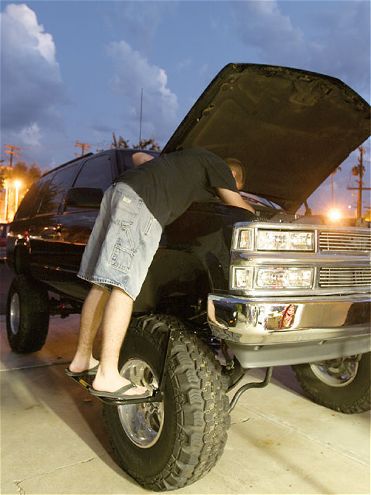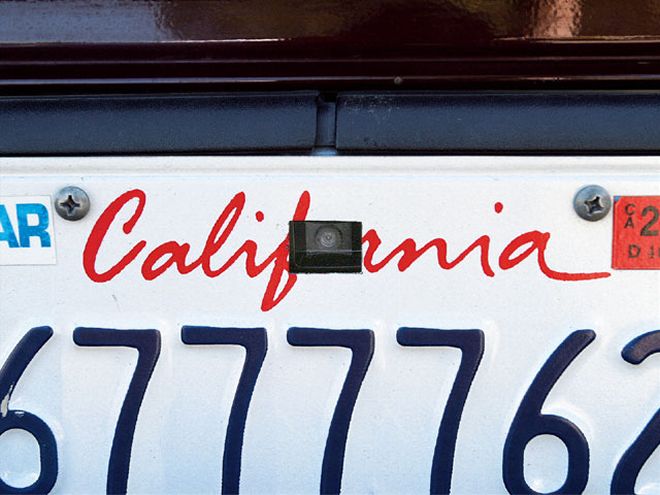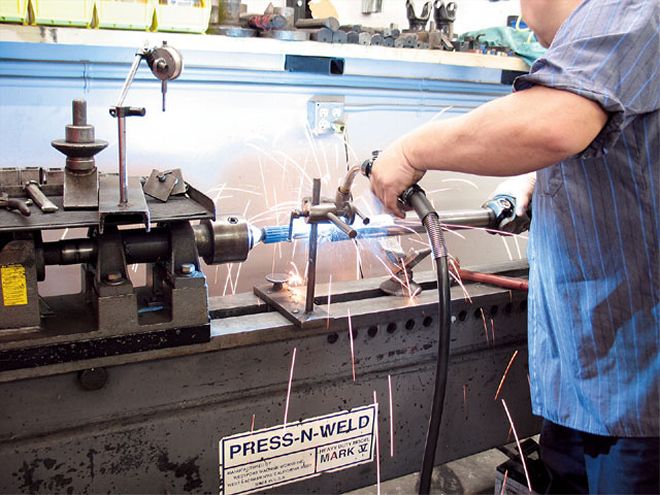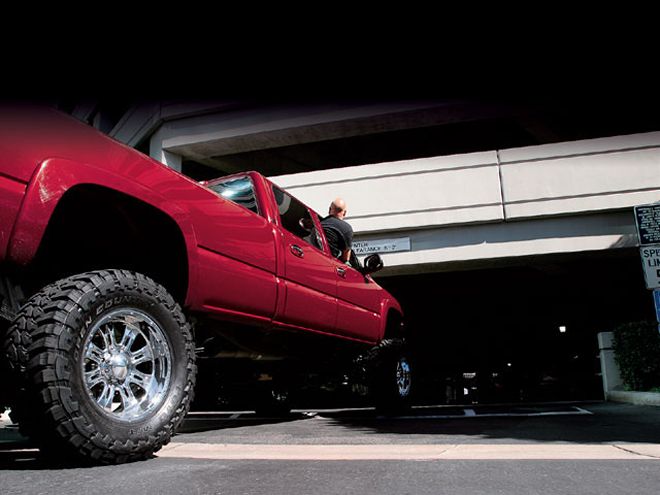
| what To Expect After Lifting Your Truck red Lifted Truck
You wake up Saturday, anxious to see if your truck is ready to be picked up from your favorite off-road shop. They've had the truck since Thursday, when you dropped it off to have an 11-inch lift, 39.5-inch tires, and 20-inch wheels installed. The clock strikes 8:30 a.m., and you hit redial to see if they're in yet. "Yeah, your truck is done. Bring me some cash," is all your ears needed to hear to provoke you to rip the covers off the bed and interrupt your girlfriend's dream about George Clooney.
She gets dressed under your constant "Are you ready yet?" annoyance. She yells at you about driving her car fast for the next 30 minutes, till you pull up to the shop. With the gold card in hand, you rush through the door and stand in a line of three guys talking about possibly modifying their trucks. Tony the sales guy, who hooked you, doesn't work Saturdays, so you are a little bummed that you won't receive the "Red Carpet" treatment you got when the hook was set. Impatience overcomes you, and likean unexpected fart while receiving a lap dance, you say, "I'm here to pick up my truck."
The customers at the counter recognize your anxiety and stop talking till one of the shop employees ask, "What's the name?" After signing the credit slip, he says they'll bring it around. You open the door and an ominous truck rolls around the corner. You recognize it as yours and the awesome sight invades your senses. The tech slips out of the truck, pulls the plastic off the seat, and hands you the keys. Oh yeah! It's bigger and badder than any of your friend's trucks and you're itching to go rub it in. You know fame of this nature is short-lived and go to jump in.
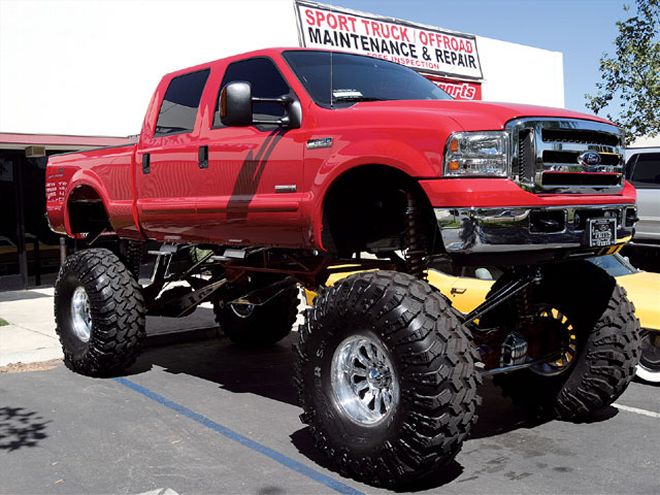
| what To Expect After Lifting Your Truck red Ford
Upon opening the door, you realize a running jump wouldn't help you get in this truck. After pondering how to get in, you put your foot in the bottom corner of the doorjamb, grab the door and steering wheel, jump with the other leg, and pull yourself into the driver seat. With the girlfriend in tow, you get on the freeway to drop off her car at home. You want to listen to the new CD you left in the stock stereo, but the sound system is no match for the mud-terrain tires that make the truck sound like the Spruce Goose. You get home, help your girlfriend into your truck, and take off to visit some friends to show off the new mods.
Not long after noon rolls around, you ask your girl where she might want to eat. She replies, "something quick," so with that in mind, you go to your favorite drive-through, but the truck won't fit under the roof overhang. There's a grip of cars behind you, so you decide that you will just roll over the curb to get out of line. You turn the wheel and go over the curb with a bit of resistance. You pull out, only to find your truck veers to the right now because running over the curb just bent the tie rod end. Again, the next 30 minutes are spent going back to the shop, while listening to your girlfriend screaming in your ear-this time, without the excitement of the new lift, just a deep-seeded disappointment about what you may have done to your truck.
As in most cases, customizing your truck screws up how user-friendly it was when stock. How does lifting your truck change how it functions? And what can be done about the adverse effects that plague the behemoth baller? Keeping your truck ergonomical is not an impossibility-it just costs more. With an aftermarket kingdom designing, marketing, and distributing products for lifted trucks, there are few negative elements that you can't correct to make your truck a full-functioning driver with awesome off-road ability.
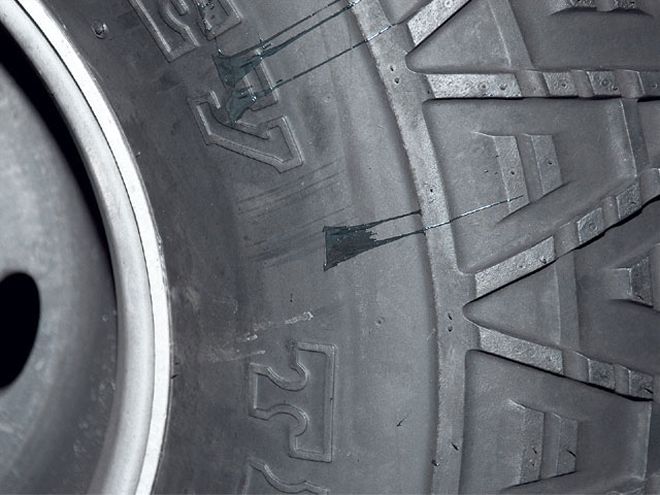
| what To Expect After Lifting Your Truck seals On Hub Assembly
Cleanliness is a good thing. Larger rolling stock will put more stress on wheel bearings and seals. Keeping the truck clean makes it easier to recognize problem areas in the drivetrain. Here, you can see seals on a hub assembly leaking wheel bearing grease. Lifted trucks require more maintenance. Bearing and seal failure can be dramatically reduced by checking hub and axle fitment every time a tire rotation is performed. Make sure the axle nut has the proper tension. This will reduce flex in the hub assembly, providing longer-living parts.
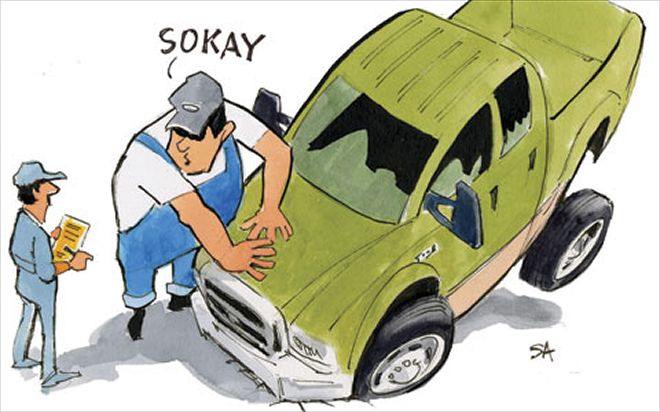
| what To Expect After Lifting Your Truck spare
A smaller spare could get you in deeper trouble than no spare at all. Rotating one side of a drive axle faster than the other can actually damage the differential, even if the axle is not in gear! A Triple A membership card could save you a bunch of headaches, but the proper size spare and a cheap longneck bottle jack would serve you better. You don't need to carry the spare every day, because someone might be able to bring you the spare from home, but it's good to take with you on the long hauls.
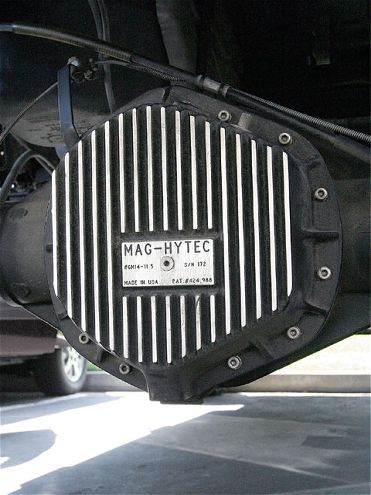
| what To Expect After Lifting Your Truck axle
Saving axle life from the extra torture can be done with an aluminum differential housing that provides addition gear oil and dissipates heat quickly. Some aftermarket housings have a magnet that helps trap metal particles, which will also extend the gear life.
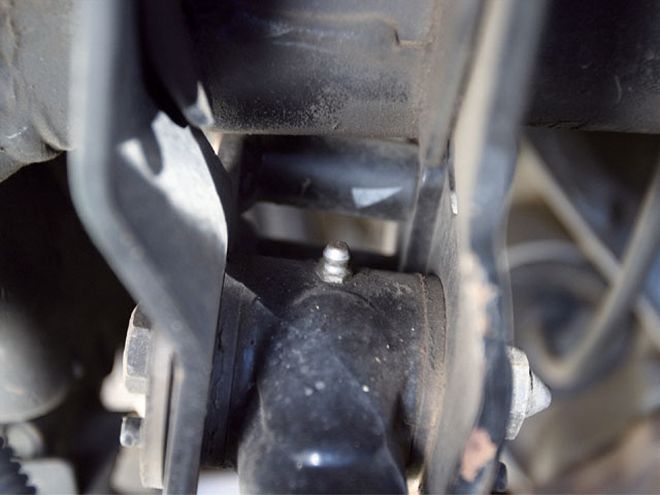
| what To Expect After Lifting Your Truck lift Kit
Just because your lift kit squeaks doesn't mean it's junk. It probably means you're ignorant or lazy. Those quiet little zerk fittings on all the rubber mounts and ball joints are there for a reason. Keep them lubed and you won't have a squeak problem, unless you visit the mud a lot. Then, some disassembly, cleaning, and reassembly will be the only fix for the annoying sound.
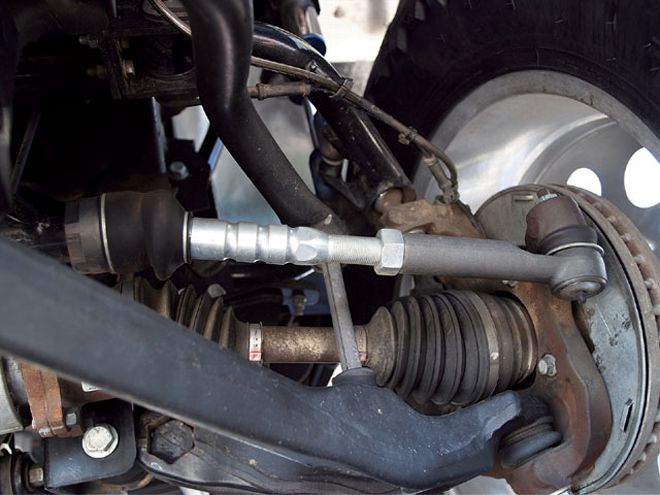
| what To Expect After Lifting Your Truck tie Rod Ends
Chevy trucks have weak tie rod ends. Adding larger tires with the addition of lift leverage can make the GM tie rods fail. Fabtech has a fix for this problem, by replacing the small-shafted tie rod with a beefy replacement tie rod end. Also, IFS trucks are more prone to alignment issues when used off road. A good rotation schedule will extend the life of the treads and will alert you of any misalignment issues.
So, if you wanted to bring the engine rpm back to stock using a 39-1/2-inch tire, you would need a 5.31:1 gear ratio. Obviously, there is no such ratio available, so you would need to choose a 5.38:1 to get you close to stock. If you wanted to save fuel and the truck had a form of forced induction, you would need to choose a 5.14:1 to provide a lower rpm for the same mph. If you were running a 15-1/2-inch-wide tire that robbed more power than a 10- or 12-inch-wide tire, you would probably want to choose a 5:57.1 to provide enhanced power. Of course, the engine speed would increase, reducing fuel mileage. The unfortunate part of this equation is that these gears are not available in GM IFS differentials. There are many variables with gears, diffs, and purpose. Make sure you do some research before attempting to figure what gears you may want to use.
30-1/2-INCH-TALL TIRE Gear Ratio MPH RPM (Automatic) RPM (Manual) 3.73:1 75 2,{{{164}}} 3,082 4.10:1 75 2,371 3,388 33-INCH-TALL TIRE Gear Ratio MPH RPM (Automatic) RPM (Manual) 3.73:1 75 1,994 2,848 4.10:1 75 2,192 3,131 35-INCH-TALL TIRE Gear Ratio MPH RPM (Automatic) RPM (Manual) 3.73:1 75 1,880 2,686 4.10:1 75 2,192 2,952 37-INCH-TALL TIRE Gear Ratio MPH RPM (Automatic) RPM (Manual) 3.73:1 75 1,778 2,540 4.10:1 75 1,955 2,792 40-INCH-TALL TIRE Gear Ratio MPH RPM (Automatic) RPM (Manual) 3.73:1 75 1,645 2,350 4.10:1 75 1,880 2,583
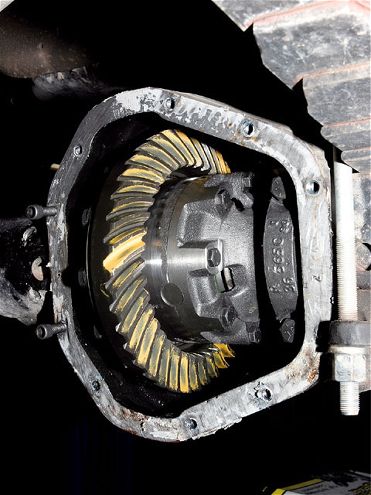
| what To Expect After Lifting Your Truck stock Gears
The increase in un-sprung mass and the increased leverage of a large tire will reduce your truck's performance. The stock gears were designed to be used for a specific tire diameter in relation to the power output of the motor. Unless you're running a diesel powerplant, re-gearing the diff (or diffs, if it's a 4x4) is essential in retaining mileage or increasing performance. How you re-gear will greatly depend on what you use your truck for. A stock 4x4 Chevy truck uses an LT245/75R16 as a standard tire. This tire is approximately 30-1/2 inches tall. GM offers stock gear ratios of either 3.73 or 4.10, depending on the model. Let's look at how changing the tire size will affect the engine's rpm.
-
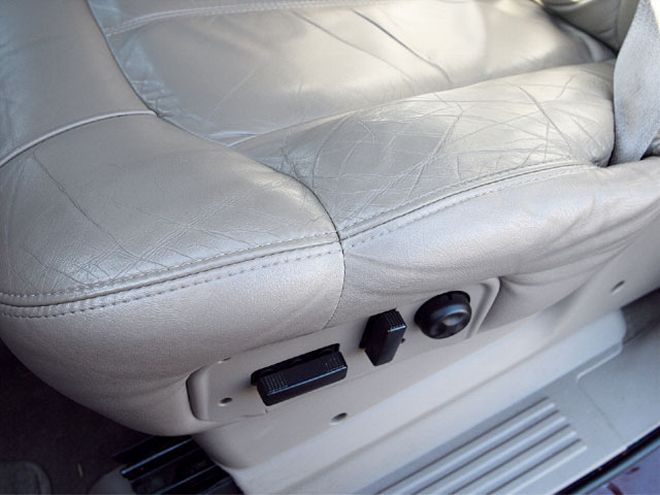
-
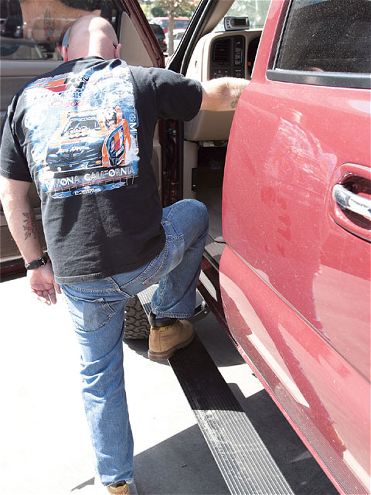
Getting in and out of a lifted truck can wear out the outer edge of your seat. Steps like these electric side steps from Amp Research are a pretty important part of combating this element. It's also a good idea to have a step that won't be much lower than the stock height. This will ensure your seat edges don't get excessive wear. In some cases, this may require two sets of steps. This may sound stupid, until you have to pull your seat apart to replace the cushion and have it re-covered.
 | what To Expect After Lifting Your Truck red Lifted Truck
You wake up Saturday, anxious to see if your truck is ready to be picked up from your favorite off-road shop. They've had the truck since Thursday, when you dropped it off to have an 11-inch lift, 39.5-inch tires, and 20-inch wheels installed. The clock strikes 8:30 a.m., and you hit redial to see if they're in yet. "Yeah, your truck is done. Bring me some cash," is all your ears needed to hear to provoke you to rip the covers off the bed and interrupt your girlfriend's dream about George Clooney.
She gets dressed under your constant "Are you ready yet?" annoyance. She yells at you about driving her car fast for the next 30 minutes, till you pull up to the shop. With the gold card in hand, you rush through the door and stand in a line of three guys talking about possibly modifying their trucks. Tony the sales guy, who hooked you, doesn't work Saturdays, so you are a little bummed that you won't receive the "Red Carpet" treatment you got when the hook was set. Impatience overcomes you, and likean unexpected fart while receiving a lap dance, you say, "I'm here to pick up my truck."
The customers at the counter recognize your anxiety and stop talking till one of the shop employees ask, "What's the name?" After signing the credit slip, he says they'll bring it around. You open the door and an ominous truck rolls around the corner. You recognize it as yours and the awesome sight invades your senses. The tech slips out of the truck, pulls the plastic off the seat, and hands you the keys. Oh yeah! It's bigger and badder than any of your friend's trucks and you're itching to go rub it in. You know fame of this nature is short-lived and go to jump in.
| what To Expect After Lifting Your Truck red Lifted Truck
You wake up Saturday, anxious to see if your truck is ready to be picked up from your favorite off-road shop. They've had the truck since Thursday, when you dropped it off to have an 11-inch lift, 39.5-inch tires, and 20-inch wheels installed. The clock strikes 8:30 a.m., and you hit redial to see if they're in yet. "Yeah, your truck is done. Bring me some cash," is all your ears needed to hear to provoke you to rip the covers off the bed and interrupt your girlfriend's dream about George Clooney.
She gets dressed under your constant "Are you ready yet?" annoyance. She yells at you about driving her car fast for the next 30 minutes, till you pull up to the shop. With the gold card in hand, you rush through the door and stand in a line of three guys talking about possibly modifying their trucks. Tony the sales guy, who hooked you, doesn't work Saturdays, so you are a little bummed that you won't receive the "Red Carpet" treatment you got when the hook was set. Impatience overcomes you, and likean unexpected fart while receiving a lap dance, you say, "I'm here to pick up my truck."
The customers at the counter recognize your anxiety and stop talking till one of the shop employees ask, "What's the name?" After signing the credit slip, he says they'll bring it around. You open the door and an ominous truck rolls around the corner. You recognize it as yours and the awesome sight invades your senses. The tech slips out of the truck, pulls the plastic off the seat, and hands you the keys. Oh yeah! It's bigger and badder than any of your friend's trucks and you're itching to go rub it in. You know fame of this nature is short-lived and go to jump in.
 | what To Expect After Lifting Your Truck red Ford
Upon opening the door, you realize a running jump wouldn't help you get in this truck. After pondering how to get in, you put your foot in the bottom corner of the doorjamb, grab the door and steering wheel, jump with the other leg, and pull yourself into the driver seat. With the girlfriend in tow, you get on the freeway to drop off her car at home. You want to listen to the new CD you left in the stock stereo, but the sound system is no match for the mud-terrain tires that make the truck sound like the Spruce Goose. You get home, help your girlfriend into your truck, and take off to visit some friends to show off the new mods.
Not long after noon rolls around, you ask your girl where she might want to eat. She replies, "something quick," so with that in mind, you go to your favorite drive-through, but the truck won't fit under the roof overhang. There's a grip of cars behind you, so you decide that you will just roll over the curb to get out of line. You turn the wheel and go over the curb with a bit of resistance. You pull out, only to find your truck veers to the right now because running over the curb just bent the tie rod end. Again, the next 30 minutes are spent going back to the shop, while listening to your girlfriend screaming in your ear-this time, without the excitement of the new lift, just a deep-seeded disappointment about what you may have done to your truck.
As in most cases, customizing your truck screws up how user-friendly it was when stock. How does lifting your truck change how it functions? And what can be done about the adverse effects that plague the behemoth baller? Keeping your truck ergonomical is not an impossibility-it just costs more. With an aftermarket kingdom designing, marketing, and distributing products for lifted trucks, there are few negative elements that you can't correct to make your truck a full-functioning driver with awesome off-road ability.
| what To Expect After Lifting Your Truck red Ford
Upon opening the door, you realize a running jump wouldn't help you get in this truck. After pondering how to get in, you put your foot in the bottom corner of the doorjamb, grab the door and steering wheel, jump with the other leg, and pull yourself into the driver seat. With the girlfriend in tow, you get on the freeway to drop off her car at home. You want to listen to the new CD you left in the stock stereo, but the sound system is no match for the mud-terrain tires that make the truck sound like the Spruce Goose. You get home, help your girlfriend into your truck, and take off to visit some friends to show off the new mods.
Not long after noon rolls around, you ask your girl where she might want to eat. She replies, "something quick," so with that in mind, you go to your favorite drive-through, but the truck won't fit under the roof overhang. There's a grip of cars behind you, so you decide that you will just roll over the curb to get out of line. You turn the wheel and go over the curb with a bit of resistance. You pull out, only to find your truck veers to the right now because running over the curb just bent the tie rod end. Again, the next 30 minutes are spent going back to the shop, while listening to your girlfriend screaming in your ear-this time, without the excitement of the new lift, just a deep-seeded disappointment about what you may have done to your truck.
As in most cases, customizing your truck screws up how user-friendly it was when stock. How does lifting your truck change how it functions? And what can be done about the adverse effects that plague the behemoth baller? Keeping your truck ergonomical is not an impossibility-it just costs more. With an aftermarket kingdom designing, marketing, and distributing products for lifted trucks, there are few negative elements that you can't correct to make your truck a full-functioning driver with awesome off-road ability.
 | what To Expect After Lifting Your Truck seals On Hub Assembly
Cleanliness is a good thing. Larger rolling stock will put more stress on wheel bearings and seals. Keeping the truck clean makes it easier to recognize problem areas in the drivetrain. Here, you can see seals on a hub assembly leaking wheel bearing grease. Lifted trucks require more maintenance. Bearing and seal failure can be dramatically reduced by checking hub and axle fitment every time a tire rotation is performed. Make sure the axle nut has the proper tension. This will reduce flex in the hub assembly, providing longer-living parts.
| what To Expect After Lifting Your Truck seals On Hub Assembly
Cleanliness is a good thing. Larger rolling stock will put more stress on wheel bearings and seals. Keeping the truck clean makes it easier to recognize problem areas in the drivetrain. Here, you can see seals on a hub assembly leaking wheel bearing grease. Lifted trucks require more maintenance. Bearing and seal failure can be dramatically reduced by checking hub and axle fitment every time a tire rotation is performed. Make sure the axle nut has the proper tension. This will reduce flex in the hub assembly, providing longer-living parts.
 | what To Expect After Lifting Your Truck spare
A smaller spare could get you in deeper trouble than no spare at all. Rotating one side of a drive axle faster than the other can actually damage the differential, even if the axle is not in gear! A Triple A membership card could save you a bunch of headaches, but the proper size spare and a cheap longneck bottle jack would serve you better. You don't need to carry the spare every day, because someone might be able to bring you the spare from home, but it's good to take with you on the long hauls.
| what To Expect After Lifting Your Truck spare
A smaller spare could get you in deeper trouble than no spare at all. Rotating one side of a drive axle faster than the other can actually damage the differential, even if the axle is not in gear! A Triple A membership card could save you a bunch of headaches, but the proper size spare and a cheap longneck bottle jack would serve you better. You don't need to carry the spare every day, because someone might be able to bring you the spare from home, but it's good to take with you on the long hauls.
 | what To Expect After Lifting Your Truck axle
Saving axle life from the extra torture can be done with an aluminum differential housing that provides addition gear oil and dissipates heat quickly. Some aftermarket housings have a magnet that helps trap metal particles, which will also extend the gear life.
| what To Expect After Lifting Your Truck axle
Saving axle life from the extra torture can be done with an aluminum differential housing that provides addition gear oil and dissipates heat quickly. Some aftermarket housings have a magnet that helps trap metal particles, which will also extend the gear life. | what To Expect After Lifting Your Truck lift Kit
Just because your lift kit squeaks doesn't mean it's junk. It probably means you're ignorant or lazy. Those quiet little zerk fittings on all the rubber mounts and ball joints are there for a reason. Keep them lubed and you won't have a squeak problem, unless you visit the mud a lot. Then, some disassembly, cleaning, and reassembly will be the only fix for the annoying sound.
| what To Expect After Lifting Your Truck lift Kit
Just because your lift kit squeaks doesn't mean it's junk. It probably means you're ignorant or lazy. Those quiet little zerk fittings on all the rubber mounts and ball joints are there for a reason. Keep them lubed and you won't have a squeak problem, unless you visit the mud a lot. Then, some disassembly, cleaning, and reassembly will be the only fix for the annoying sound. | what To Expect After Lifting Your Truck tie Rod Ends
Chevy trucks have weak tie rod ends. Adding larger tires with the addition of lift leverage can make the GM tie rods fail. Fabtech has a fix for this problem, by replacing the small-shafted tie rod with a beefy replacement tie rod end. Also, IFS trucks are more prone to alignment issues when used off road. A good rotation schedule will extend the life of the treads and will alert you of any misalignment issues.
| what To Expect After Lifting Your Truck tie Rod Ends
Chevy trucks have weak tie rod ends. Adding larger tires with the addition of lift leverage can make the GM tie rods fail. Fabtech has a fix for this problem, by replacing the small-shafted tie rod with a beefy replacement tie rod end. Also, IFS trucks are more prone to alignment issues when used off road. A good rotation schedule will extend the life of the treads and will alert you of any misalignment issues. | what To Expect After Lifting Your Truck stock Gears
The increase in un-sprung mass and the increased leverage of a large tire will reduce your truck's performance. The stock gears were designed to be used for a specific tire diameter in relation to the power output of the motor. Unless you're running a diesel powerplant, re-gearing the diff (or diffs, if it's a 4x4) is essential in retaining mileage or increasing performance. How you re-gear will greatly depend on what you use your truck for. A stock 4x4 Chevy truck uses an LT245/75R16 as a standard tire. This tire is approximately 30-1/2 inches tall. GM offers stock gear ratios of either 3.73 or 4.10, depending on the model. Let's look at how changing the tire size will affect the engine's rpm.
| what To Expect After Lifting Your Truck stock Gears
The increase in un-sprung mass and the increased leverage of a large tire will reduce your truck's performance. The stock gears were designed to be used for a specific tire diameter in relation to the power output of the motor. Unless you're running a diesel powerplant, re-gearing the diff (or diffs, if it's a 4x4) is essential in retaining mileage or increasing performance. How you re-gear will greatly depend on what you use your truck for. A stock 4x4 Chevy truck uses an LT245/75R16 as a standard tire. This tire is approximately 30-1/2 inches tall. GM offers stock gear ratios of either 3.73 or 4.10, depending on the model. Let's look at how changing the tire size will affect the engine's rpm.

